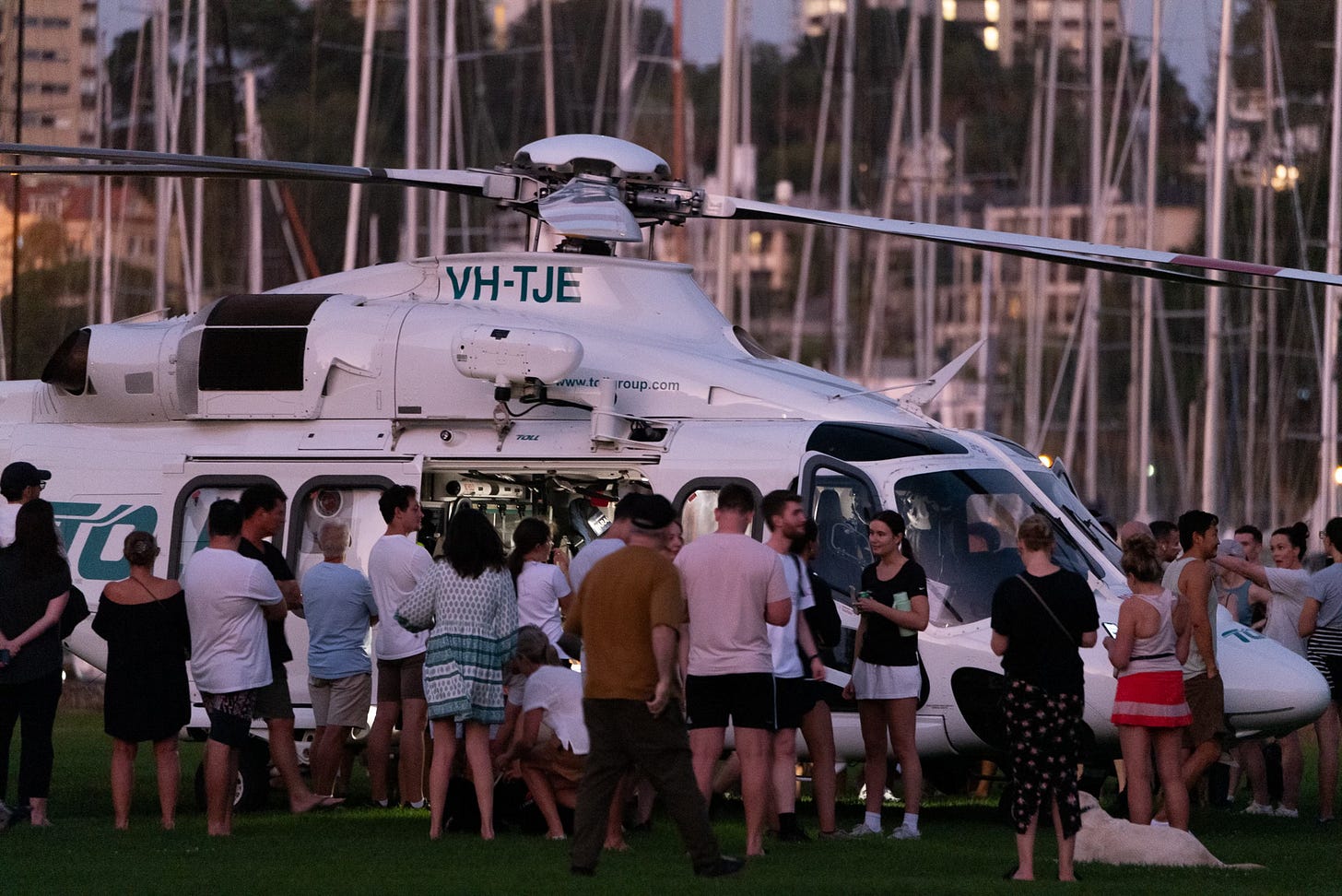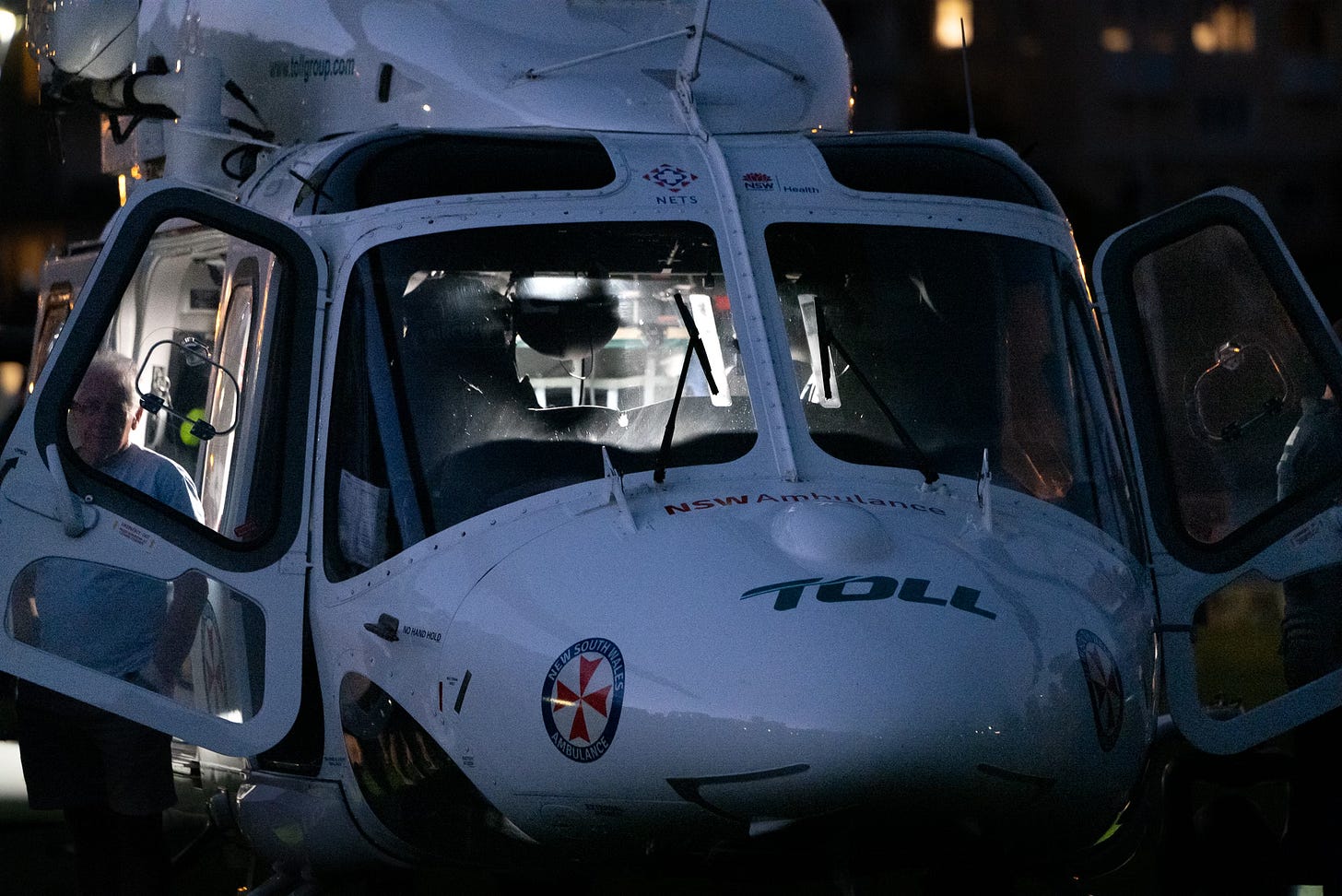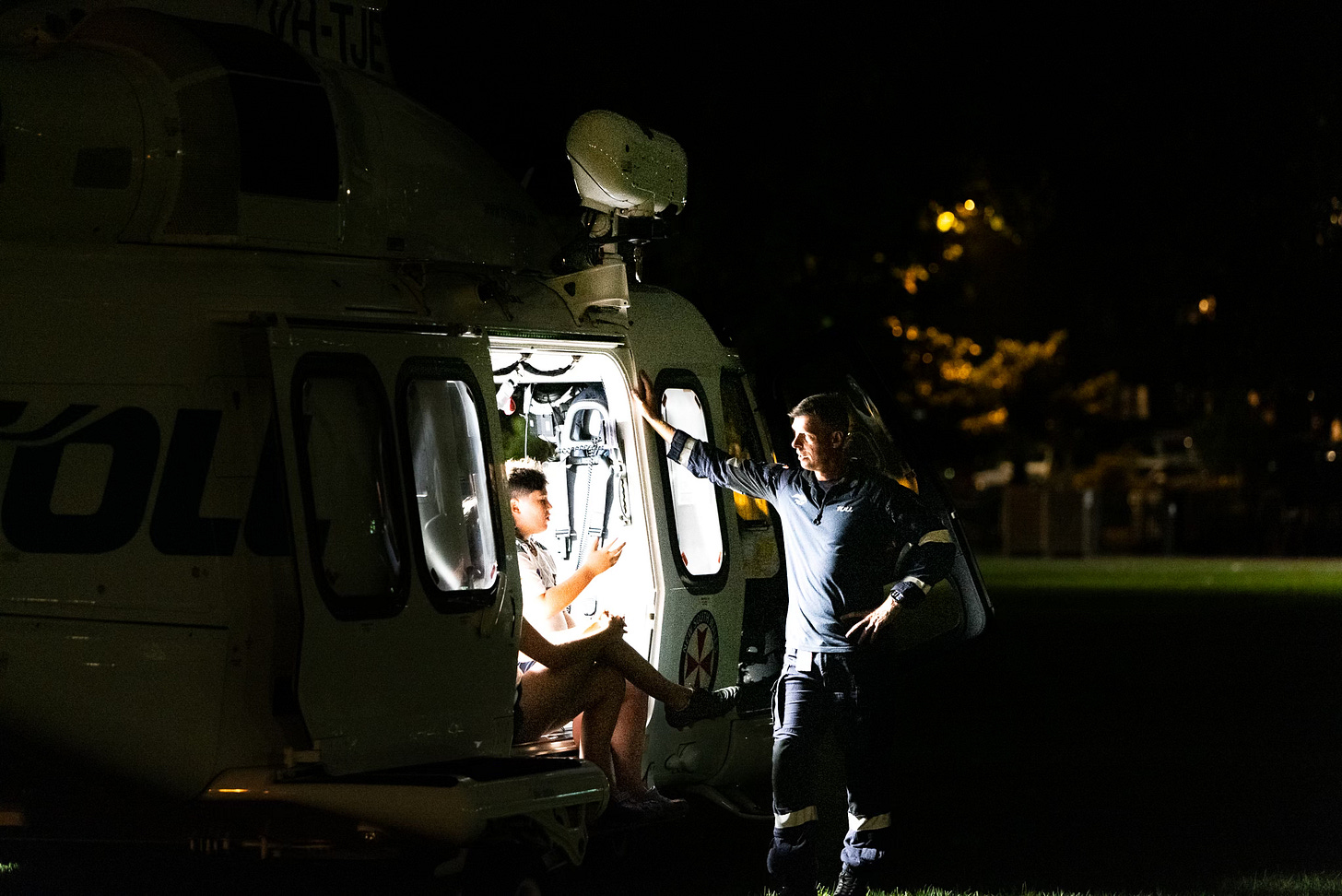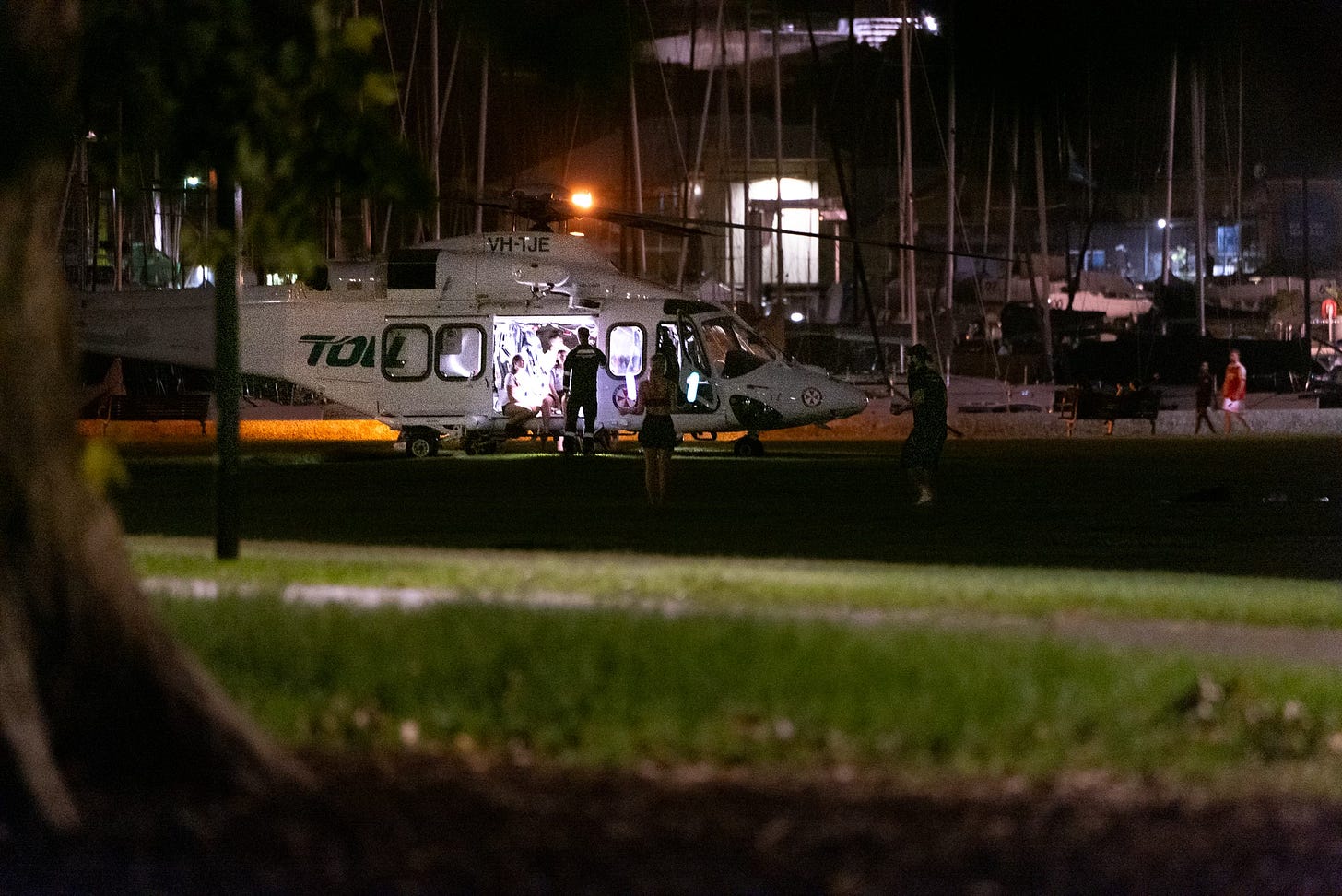There is a continuous flow of helicopter traffic in the Eastern suburbs of Sydney, mostly tourist flights tracking up and down the harbour making their pilgrimage to the Opera House and the Harbour Bridge. But when I heard the chuf chuf chuf of rotor blades on Monday evening I instantly knew this was a different copter. Six years ago I was in a very serious health crisis on a remote tropical island and a critical care team had to be winched down to stabilise me and then I was winched up into a medical rescue helicopter and airlifted to hospital. That team saved my life, they were incredible and they are absolute heroes to me. From that experience the sound of a medical rescue helicopter has been indelibly imprinted onto my brain. One had entered my airspace and I knew it was going to land in the park right next to where I live. Ever the photographer the first thing I did was assemble my camera and then confirm the approximate landing zone before heading out the door.
With the sound of police sirens filling the air and neighbors running to see what all the commotion was about I crossed the little bridge connecting my place to Rushcutters Bay Park and there she was in all her beauty: a medical rescue helicopter landing where usually at this time of day people would be out enjoying the evening air and walking their dogs. The police had cleared the area and the copter landed smoothly. The shot above was moments after the landing. The shot below of one of the police cars assisting.
At first everyone watched the helicopter and the crew, stunned that it was sitting in their park, but then one man ventured over to speak to the crew.
It soon became evident that the crew were on standby and open to talking to the public. It didn't take long and they were swamped with curious onlookers as you can see above.
With the light began to fade a sense of calm fell on the park. What we weren't seeing was the tragic scene taking place around the corner in the harbourside inner city suburb of Elizabeth Bay. It is usually a quiet place with a small marina and a tiny beach mostly used by kayakers to launch their craft. People and dogs do also swim from here and that's exactly what Lauren, a 29 year old kayaker who had recently moved to the area was doing on Monday evening. She was about 20 metres out from the shore and there was another swimmer even further out. Unfortunately for Lauren, an apex predator decided to take a closer look at her. A suspected bull shark charged her and took a bite of her leg. Blood quickly filled the water and Lauren bravely fought her way back to shore, managing to climb onto the wharf before collapsing. Luckily a vet was able to apply a tourniquet and stem the bleeding.
The medical helicopter and ambulances were called in and the ambulance crew went straight to Lauren to stabilise her before she could be moved. This is a critical step and sadly led to many shark attack deaths in previous decades because people were moved too soon after such a traumatic event. The copter was sent to Ruschutters as back up in case Lauren's situation required her to be airlifted to Royal North Shore. While her injuries were serious it was decided to get her to St Vincents Hospital instead which is only a few minutes drive away.
The critical care team weren't resting on their laurels, while their ambulance colleagues were handling the shark attack. They quickly shifted into public outreach mode and engaged with members of the public. It was amazing to watch these literal heroes chatting with people and patiently answering their questions. Medical rescue helicopter services are not cheap and their operators rely on the goodwill of support, be it from the public, corporations or the government, for their survival so this exercise was as important as any other this crew could undertake.
My last shot before heading home was of the helicopter from a distance. You can clearly see yacht masts in the background at the Cruising Yacht Club. Thankfully Lauren is in a stable condition, but this is the second serious shark attack in the main harbour in a matter of years. The last victim was a navy diver and he lost multiple limbs. The area has been declared a 'bull shark hotspot', but activity is heightened in the summer months when the water is warmer and fish flock into these waters. Activity is heightened even further at dusk, when bull sharks emerge from the 40 metre deep holes they lurk in during the day to surface feed on bonito, mackerel tuna and salmon. This is an especially dangerous time to be in the water.
I'm planning on sharing a few aerial photos next week, but who knows what adventures lie around the corner. Until then stay safe out there.












Rand, your compelling narrative and powerful photography capturing Sydney Harbour's recent shark attack weave together a distinctive perspective and gripping details, transforming an extraordinary incident into a profoundly personal and relatable story. Looking forward to seeing the aerial photos!